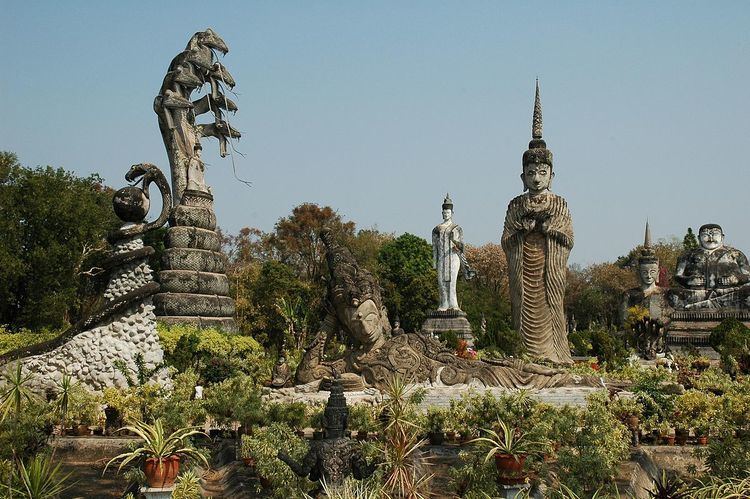Phone +66 93 314 6102 | Subject Gautama Buddha | |
 | ||
Hours Open today · 8AM–6PMWednesday8AM–6PMThursday8AM–6PMFriday8AM–6PMSaturday8AM–6PMSunday8AM–6PMMonday8AM–6PMTuesday8AM–6PMSuggest an edit Similar | ||
Sala keoku sculpture park nong khai thailand
Sala Keoku (Thai: ศาลาแก้วกู่; rtgs: Sala Kaeo Ku; [sǎːlaː kɛ̂ːw kùː], also spelled as Sala Keo Ku, Sala Keo Koo, Sala Kaew Ku, Sala Kaew Koo, Salakaewkoo, Sala Gaew Goo, Sala Kaeoku, etc. Alternative name: Wat Khaek) is a park featuring giant fantastic concrete sculptures inspired by Buddhism and Hinduism. It is located near Nong Khai, Thailand in immediate proximity of the Thai-Lao border and the Mekong river. The park has been built by and reflects the personal vision of Luang Pu Bunleua Sulilat and his followers (the construction started in 1978). It shares the style of Sulilat's earlier creation, Buddha Park on the Lao side of Mekong, but is marked by even more extravagant fantasy and greater proportions.
Contents
Some of the Sala Keoku sculptures tower up to 25m in the sky. Those include a monumental depiction of Buddha meditating under the protection of a seven-headed Naga snake. While the subject (based on a Buddhist legend) is one of the recurrent themes in the religious art of the region, Sulilat's approach is highly unusual, with its naturalistic (even though stylized) representation of the snakes, whose giant protruding tongues beautifully complement the awe-inspiring composition.
The Sala Keoku pavilion is a large three-story concrete building, whose domes bear a surprising resemblance to a mosque. It was constructed following Sulilat's plans after his death. The 3rd floor hosts a large number of Sulilat-related artifacts, as well as his mummified body.
Perhaps the most enigmatic part of the park is the Wheel of Life, a circular multi-part group of sculptures representing the karmic cycle of birth and death through a progression of tarot-like characters. The composition culminates with a young man taking a step across the fence surrounding the entire installation to become a Buddha statue on the other side.
